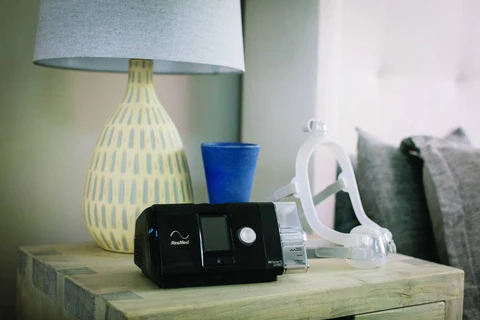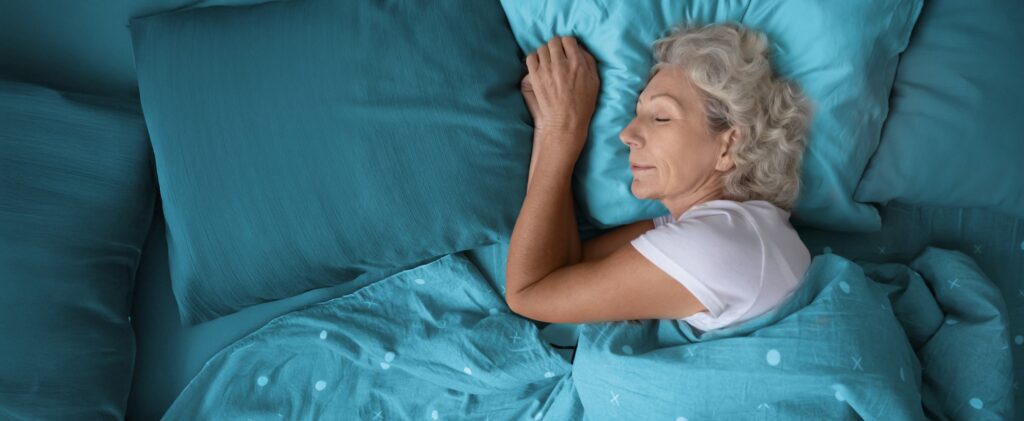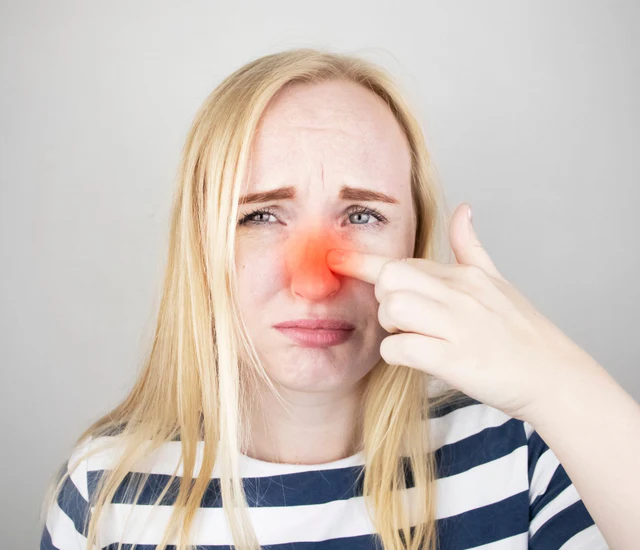CPAP is an important therapy for obstructive sleep apnea, but it may be difficult to accept at first. Avoiding uncomfortable masks and other CPAP issues is how to avoid them.
The use of a CPAP machine is a standard method for treating obstructive sleep apnea. A CPAP machine provides constant and steady air pressure throughout the night to ensure that you are able to breathe properly. A hose and mask or nosepiece are used to accomplish this.
There are four common issues with CPAPs: a leaky mask, difficulty falling asleep, a congested nose, and a dry mouth and throat.
CPAP masks or machines may not be suitable for you, but there are other options. If a CPAP mask doesn’t work for you, you may be able to adjust it to make it more comfortable.
BELOW ARE 10 COMMON CPAP ISSUES AND HOW TO ADDRESS THEM:

1. CPAP MASKS THAT ARE THE WRONG SIZE OR STYLE CAN CAUSE PROBLEMS.
Make sure you have the right CPAP mask by working closely with your health care provider and CPAP supplier. Because people have different facial structures, the right mask style and size for someone else may not be the right one for you. Some CPAP masks have straps that stretch across your forehead and cheeks, while others have straps that stretch across your forehead and cheeks.
- Full-face masks that cover your mouth and nose are available. These masks are ideal if you prefer to breathe through your mouth at night. You might feel claustrophobic, but they provide a stable fit if you move a lot in your sleep.
- These masks also come with nasal cushion and nasal pillows that rest over or under your nose and straps that cover less of your face. The nasal pillows might be less cumbersome if you wear glasses or read while wearing the mask. If you move around a lot in your sleep or sleep on your side, a nasal pillow mask may not be an option. The mask is usually adjustable.
- Your weight doesn’t mean that you’ll be the same size in your mask. The ability to adjust your mask is available on most CPAP masks.
- Ask your doctor or CPAP supplier to teach you how to adjust your mask to get the best fit. Also, product instructions from the manufacturer can help you do the same thing. A properly fitted mask should not cause discomfort or pain.
Try wearing the CPAP mask and hose while you are awake, first. Then, try wearing the mask and hose with the machine turned on while awake. It may take a while to get used to the sensation of wearing a CPAP machine every night—including while taking naps. Using the CPAP machine only occasionally may prevent you from adjusting to it. Stick with it for several months or more to see if your mask and pressure is right for you.
2. FORCED AIR IS DIFFICULT TO TOLERATE.
Using a machine with a ramp setting may help you deal with this problem. The machine starts at a low air pressure and then slowly and automatically increases the air pressure to your desired setting as you fall asleep. Your doctor can adjust its timing.
If this function is ineffective, consult with your physician about switching to a device that automatically adjusts air pressure while you sleep. A BiPAP machine that delivers increased pressure when you inhale (inhale) and reduced pressure when you exhale (exhale) is an example.
3. DRY NOSES ARE UNCOMFORTABLE.
It is crucial to check if your mask fits well. A leaky mask can dry out your nose. If you have to tighten the straps frequently to prevent air leakage, the mask doesn’t fit properly.
It can be alleviated with a CPAP machine that has a heated humidifier, which connects to the air pressure device. You can adjust the level of humidity. Using a nasal saline spray before bedtime may help relieve a dry, stuffy nose.
4. BEING ENCLOSED MAKES ME UNEASY.
Practice using your mask while you’re awake. First, just hold it up to your face without any of the other parts. Once you’re comfortable with that, try wearing the mask with the straps.
First, test the CPAP machine with the straps detached. Then, try wearing the mask with the straps. Finally, sleep with the mask and apparatus on.
Relaxation techniques, such as progressive muscle relaxation, may assist in reducing CPAP-related anxiety.
Your doctor or CPAP supplier may be able to offer you with a different size mask or mask style, such as a nasal pillow model, if you still feel claustrophobic.
5. A LEAKING MASK, SKIN IRRITATION, OR PRESSURE ULCERS MAY RESULT IN SKIN DAMAGE.
An ill-fitting or leaky mask may result in you not receiving the full air pressure you require, irritating your skin, or directing air into your eyes, causing them to become dry or watery.
Make certain the mask doesn’t sit too high on the bridge of your nose, directing air into your eyes, if it fits over your nose. You can adjust the pads and straps to get a better fit.
If your weight has undergone a significant shift, you may need to get in touch with your CPAP provider to discover a different size mask. Ask about a different style mask that utilises nasal pillows if you experience skin damage or sores, such as on your nose. Your doctor should be notified immediately if you develop such problems.
6. SLEEPING DIFFICULTY.
Spending time wearing the mask during the day may help you get accustomed to its feel and make it easier to fall asleep at night.
You may find that gradual and gentle air pressure increases help you get a good night’s sleep when using a machine with a ramp feature.
It is also important to follow good sleep habits. Maintain a regular exercise routine and avoid caffeine and alcohol before bedtime. Try to unwind. For example, take a hot bath before bed. Don’t go to bed until you are ready to sleep.
7. LACK OF SALIVA.
Some CPAP machines may cause dry mouth if you breath through your mouth at night or sleep with your mouth open. A chin strap may help keep your mouth shut and reduce air leaks if you wear a nasal mask.
A machine with a full face mask that covers your mouth and nose might be effective for you. A CPAP-heated humidifier that connects to the air pressure machine may also be beneficial.
8. AN ACCIDENTAL REMOVAL OF THE CPAP MASK DURING THE NIGHT.
It’s not uncommon to wake up and discover that you’ve removed your face mask during your sleep. You may have removed your mask while sleeping because you were restless. If you move a lot when you sleep, a full face mask may stay on your face better. Consider trying a mask that may fit you better next time.
You may be removing the mask because your nose is stuffy. In this case, a proper mask fit and a CPAP-heated humidifier might be of assistance. A chin strap may keep the mask in place.
Consider setting an alarm for a certain time in the evening to see if the mask is still in place. If the problem persists, you can set the alarm for a later hour.
9. NOISE CAN BE ANNOYING.
It’s worth checking whether your CPAP machine’s noise is annoying. If it is, first ensure its air filter is clean and unblocked. Ask your doctor or CPAP supplier how to properly clean your mask and hose. Something may worsen the noise if it is in the way. New CPAP machines are nearly silent.
Your doctor or CPAP supplier can inspect your machine to make sure it’s working properly. If the machine is working properly but you are still bothered by the noise, wear earplugs or use a white noise machine to mask it. Placing the CPAP machine as far away from the bed as possible may help reduce its noise. Ask your doctor or CPAP supplier if extra tubing may be appropriate for your machine.
10. PATIENT AND DETERMINED EFFORT ARE THE KEYS TO SUCCESS.
It can be difficult to get accustomed to using a CPAP machine, but it is critical that you do so. Using a CPAP machine is crucial in avoiding the complications of obstructive sleep apnea, including heart problems and excessive daytime sleepiness.
Work with your sleep doctor and CPAP supplier to obtain the finest mask fit and device. Regular visits to your physician are critical and may help solve any problems and adjust settings, if necessary. It may take some time to establish the correct settings and get accustomed to the mask.
Being patient and diligent, CPAP can positively affect your health and quality of life. Contact a sleep expert today at CPAPnation.com
Work Cited:
- CPAP. National Heart, Lung, and Blood Institute. https://www.nhlbi.nih.gov/health-topics/cpap. Accessed Sept. 17, 2021.
- Weaver T, et al. Assessing and managing nonadherence with continuous positive airway pressure (CPAP) for adults with obstructive sleep apnea. https://www.uptodate.com/contents/search. Accessed Sept. 17, 2021.
- Choosing a mask. American Sleep Apnea Association. https://www.sleepapnea.org/treat/cpap-therapy/choosing-a-mask/. Accessed Sept. 17, 2021.
- All you need to know about CPAP therapy. American Sleep Apnea Association. https://www.sleepapnea.org/treat/cpap-therapy/. Accessed Sept. 17, 2021.
- When things go wrong with PAP. American Sleep Apnea Association. https://www.sleepapnea.org/treat/cpap-therapy/troubleshooting-guide-for-cpap-problems/when-things-go-wrong-with-pap/. Accessed Sept. 17, 2021.
- Cao M, et al. Continuous positive airway pressure therapy in obstructive sleep apnea: Benefits and alternatives. Expert Review of Respiratory Medicine. 2017; doi: 10.1080/17476348.2017.1305893.
- Lebret M, et al. Factors contributing to unintentional leak during CPAP treatment: A systematic review. Chest. 2017; doi: 10.1016/j.chest.2016.11.049.
- Johnson KG, et al. Treatment of sleep-disordered breathing with positive airway pressure devices: Technology update. Medical Devices: Evidence and Research. 2015; doi: 10.2147/MDER.S70062.
- Troubleshooting guide for CPAP problems. American Sleep Apnea Association. https://www.sleepapnea.org/treat/cpap-therapy/troubleshooting-guide-for-cpap-problems/. Accessed Sept. 17, 2021.
- CPAP machines: Tips for avoiding 10 common problems. (2021, October 27). Mayo Clinic. https://www.mayoclinic.org/diseases-conditions/sleep-apnea/in-depth/cpap/art-20044164
- Olson EJ (expert opinion). Mayo Clinic. Sept. 21, 2021.
Disclaimer: The information provided on Nationwidemedical.com is solely for educational purposes and should not be used as a substitute for professional medical advice, diagnosis, or treatment. Always seek the advice of your physician or other qualified healthcare provider with any questions you may have regarding a medical condition. Never disregard professional medical advice or delay in seeking it because of something you have read on this website. Nationwidemedical.com is not responsible or liable for any advice, course of treatment, diagnosis or any other information, services or products that you obtain through this site. Reliance on any information provided by Nationwidemedical.com is solely at your own risk.



